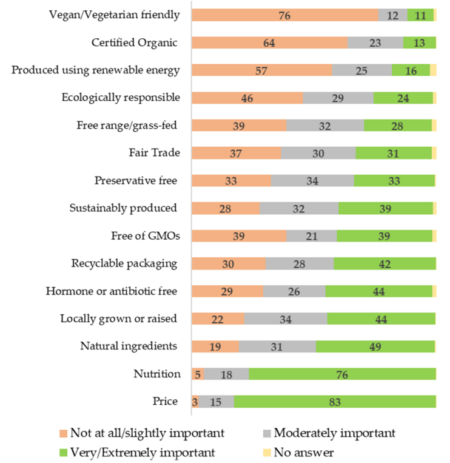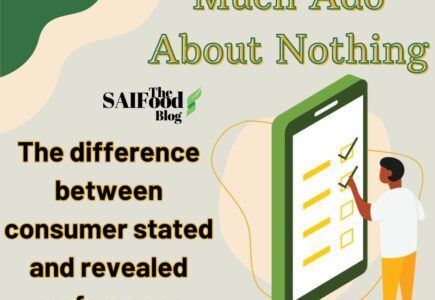Our desire for deals
It often seems that everyone wants something for free. If they’re not able to get it for free, they then prefer to get it well below the cost to produce it. Retailers often offer products on sale, although they’re rarely losing money, just simply reducing their margin on selling the product. Examples of this can be clothing, such as winter coats.
Grocery stores are no different when it comes to offering deals. Some stores will offer products as a ‘loss leader’, which is when the product is sold below cost, simply to attract consumers into the store. Milk can be sold at a loss, which is why it’s often positioned at the back of the store, often at the end of the snack isles. This is done as grocery stores know consumers often stop to get milk on the way home from work and will be hungry and tempted to buy snack food as well.
What consumers say they want
In 2022, the supermarket and grocery store industry in Canada was worth $114 billion in sales. Given the large size of this sector, grocery stores spend a lot of money surveying consumers to better understand what consumers are looking for in food products, trying to identify emerging trends and to then be the first to get those products into their stores. Stores also invest a lot of money in analyzing sales data. Since the sale of each product is electronically recorded, retail chains are able to track volumes and use this data to identify products that may be experiencing rising sales.
A 2020 article by Forbes magazine identified that 65% of consumers look for sustainably labelled products. When asked, American consumers said they’d be willing to pay more to purchase food products that were sustainably produced, with the average price increase being 30-40%.
What consumer shopping habits say
Relying on these numbers can be problematic as consumer attitudes that are expressed outside of a grocery store often greatly differ from actual shopping habits. When shoppers are disconnected from the reality of the marketplace, or in instances when costs are hypothetically asked, responses can often be supportive, as the respondent is not actually spending any of their financial resources.
One way that academics have tried to better understand how much consumers would actually pay for products has been to use experimental auctions. This is a process where participants are given real money and then given the opportunity to pay for products, based on specific attributes that are important to them. Determining the amount of money that a participant spends to buy a specific product helps to quantify the importance of the specific attribute, such as for ‘sustainably produced’. These experimental auctions can be carried out in various geographic locations, helping to further identify the scale of attribute appeals.
An alternative to this method, is to use a consumer survey and ask consumers about their actual purchase habits, that is, asking about what factors are important to them when it comes to buying products in grocery stores. When respondents are asked to mentally picture themselves inside a grocery store and to then answer questions about the importance of various factors, responses again differ. Research I’ve been involved with asked such questions of Canadian consumers in November 2022, finding that consumers overwhelmingly identify that price is by far, the most important factor for purchase decisions. The nutrition of food products is a strong second. Other factors lag considerably. In our study, sustainability was highly important to 39%.

Money talks
Consumer preferences for specific products and production processes will evolve and change over time. It’s important that the agriculture industry view these as an expression of interest, not a firm commitment to purchase. If products can be provided to the market with specific marketing attributes, such as sustainably produced, at no extra cost, it would be prudent to expect that consumers would purchase such products. However, if such a product contained a 30% higher price, it is quite unlikely that there would be demand for these products.

